Are you an aviation enthusiast or pilot?Sign up for our newsletter, full of tips, reviews and more!

Think Fast: Engine Out Over High Terrain. Run the memory checklist for your plane. Fuel? Mixture? Tank? Mags? Restart? No joy. Which way do you turn? What’s your airspeed? Can you swap airspeed for altitude? Where’s the wind? Where can you put it down? Declare an emergency? Yikes. Suddenly becoming the pilot of a lousy heavy iron glider with little to no training in it is a bad way to learn.
Yet, at the EAA’s Pilot Proficiency Center, of which Plane & Pilot was once again a proud sponsor, such scenarios are there for the experiencing with no worries about bending metal or having the ultimate bad day.
Founded by Hartzell Propeller’s Joe Brown seven years ago, the as-yet unsponsored and unnamed gathering was in a too-small and hastily thrown together tent over by the flight line, a far cry from its current palatial (by OSH standards, anyway) digs at the crossroads of the show.
This year’s PPC hosted a record number of, well, a record number of just about every countable thing, including 700 pilots flying scenarios on one of 15 Redbird Flight Simulations simulators (14 LDs and one Crosswind Trainer). Pilots put 591.7 hours on the flight sims, flying 2,576 sorties in all. Redbird President Charlie Gregoire estimates that attendees received $86,500 worth of flight instruction at no cost to them. Providing the instruction were 88 volunteer CFIs, and another dozen people volunteered to run the PPC itself.
The visitors loved it. One pilot, Brown told Plane & Pilot, showed up every day from Monday through Saturday and came in twice on Thursday, accounting for 15.37 hours of sim flying amassed while flying 40 different scenarios.
The intake questionnaire that pilots took painted a great picture of who was attracted to the tent. A total of 57 percent had zero to 500 hours of total time as a pilot, 62 percent were private pilots, and 32 percent had their instrument ticket. A quarter of them didn’t have a current biennial flight review, and less than half had any experience in glass-cockpit airplanes. The most sought-after practice scenario was landing practice, followed by our favorite, “Surprise me.” When asked to self-assess their proficiency on a scale of 1 to 10, 1 being “not at all” proficient and 10 being “Chuck Yeager,” respondents gave themselves an average of between a 5 and a 6. So there was work to be done.
As in years past, pilots flocked to the more than two-dozen Tech Talks presented during the week–2,600 pilots showed up for the Wings-Credit sessions. AOPA’s breakfast get together receptions and talks were again popular and not just for the donuts and despite the early hour. And the PPC’s new capability to host pilots’ sim sessions on the cloud for immediate review with the CFI, or for later perusal after the lessons have sunk in, was a major hit.
And the message shared by everyone associate with the event and championed by Brown is this: Maintaining proficiency is an ongoing effort that can be a whole lot of fun, just as it was at the PPC again this year.




